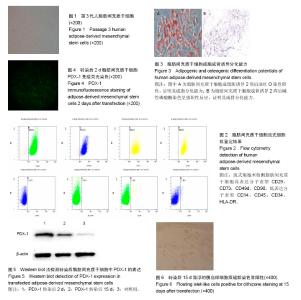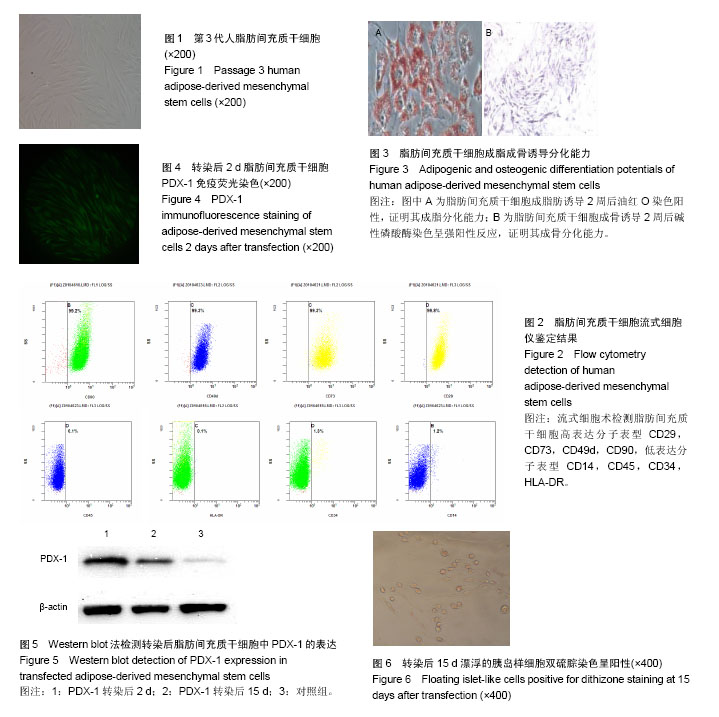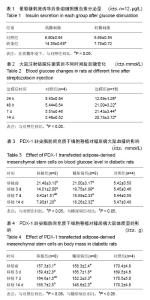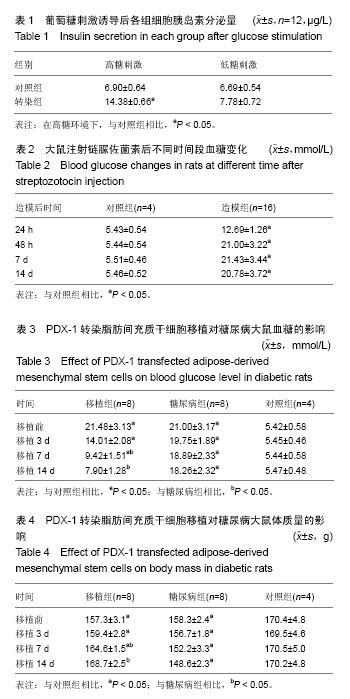| [1] Noguchi H, Iwanaga Y, Okitsu T, et al. Evaluation of islet transplantation from non-heart beating donors. Am J Transplant. 2006;6(10):2476-2482.[2] Dragin N, Dalton TP, Miller ML, et al. For dioxin-induced birth defects, mouse or human CYP1A2 in maternal liver protects whereas mouse CYP1A1 and CYP1B1 are inconsequential. J Biol Chem. 2006;281(27):18591-18600.[3] Gir P, Oni G, Brown SA, et al. Human adipose stem cells: current clinical applications.Plast Reconstr Surg. 2012; 129(6):1277-1290.[4] Li Q, Qi LJ, Guo ZK, et al. CD73+ adipose-derived mesenchymal stem cells possess higher potential to differentiate into cardiomyocytes in vitro. J Mol Histol. 2013; 44(4):411-422.[5] Park A, Hogan MV, Kesturu GS, et al. Adipose-derived mesenchymal stem cells treated with growth differentiation factor-5 express tendon-specific markers. Tissue Eng Part A. 2010;16(9):2941-2951.[6] He Q, Wan C, Li G. Concise review: multipotent mesenchymal stromal cells in blood. Stem Cells. 2007;25(1):69-77.[7] Yoshida S, Kajimoto Y, Yasuda T, et al. PDX-1 induces differentiation of intestinal epithelioid IEC-6 into insulin-producing cells. Diabetes. 2002;51(8):2505-2513.[8] 王博,吴汉青,吴河水,等.胰十二指肠同源框基因-1联合细胞因子诱导人脐带间充质干细胞分化为胰岛β样细胞的研究[J].中华胰腺病杂志,2011,11(1):43-47.[9] Silveira PA, Johnson E, Chapman HD, et al. The preferential ability of B lymphocytes to act as diabetogenic APC in NOD mice depends on expression of self-antigen-specific immunoglobulin receptors. Eur J Immunol. 2002;32(12): 3657-3666.[10] Hulbert C, Riseili B, Rojas M, et al. B cell specificity contributes to the outcome of diabetes in nonobese diabetic mice. J Immunol. 2001;167(10):5535-5538.[11] Najar M, Raicevic G, Boufker HI, et al. Adipose-tissue-derived and Wharton's jelly-derived mesenchymal stromal cells suppress lymphocyte responses by secreting leukemia inhibitory factor. Tissue Eng Part A. 2010;16(11):3537-3546.[12] Yanai G, Hayashi T, Zhi Q, et al. Electrofusion of mesenchymal stem cells and islet cells for diabetes therapy: a rat model. PLoS One. 2013;8(5):e64499.[13] Karaoz E, Okcu A, Ünal ZS, et al. Adipose tissue-derived mesenchymal stromal cells efficiently differentiate into insulin-producing cells in pancreatic islet microenvironment both in vitro and in vivo. Cytotherapy. 2013;15(5):557-570.[14] Bramswig NC, Kaestner KH. Organogenesis and functional genomics of the endocrine pancreas. Cell Mol Life Sci. 2012; 69(13):2109-2123.[15] Khoo C, Yang J, Weinrott SA, et al. Research resource: the pdx1 cistrome of pancreatic islets. Mol Endocrinol. 2012;26(3): 521-533.[16] Cerf ME. Transcription factors regulating beta-cell function. Eur J Endocrinol. 2006;155(5):671-679.[17] Talebi S, Aleyasin A, Soleimani M, et al. Derivation of islet-like cells from mesenchymal stem cells using PDX1-transducing lentiviruses. Biotechnol Appl Biochem. 2012;59(3):205-212.[18] Li L, Li F, Qi H, Coexpression of Pdx1 and betacellulin in mesenchymal stem cells could promote the differentiation of nestin-positive epithelium-like progenitors and pancreatic islet-like spheroids. Stem Cells Dev. 2008;17(4):815-823.[19] Boroujeni ZN, Aleyasin A. Insulin producing cells established using non-integrated lentiviral vector harboring PDX1 gene. World J Stem Cells. 2013;5(4):217-228.[20] Polak M, Bouchareb-Banaei L, Scharfmann R, et al. Early pattern of differentiation in the human pancreas. Diabetes. 2000;49(2):225-232.[21] Chandra V, G S, Phadnis S, et al. Generation of pancreatic hormone-expressing islet-like cell aggregates from murine adipose tissue-derived stem cells. Stem Cells. 2009;27(8): 1941-1953.[22] Grapin-Botton A, Majithia AR, Melton DA. Key events of pancreas formation are triggered in gut endoderm by ectopic expression of pancreatic regulatory genes. Genes Dev. 2001; 15(4):444-454.[23] Ferber S, Halkin A, Cohen H, et al. Pancreatic and duodenal homeobox gene 1 induces expression of insulin genes in liver and ameliorates streptozotocin-induced hyperglycemia. Nat Med. 2000;6(5):568-572.[24] Yoshida S, Kajimoto Y, Yasuda T, et al. PDX-1 induces differentiation of intestinal epithelioid IEC-6 into insulin-producing cells. Diabetes. 2002;51(8):2505-2513.[25] 王晓囡,周艳,严敏,等.PDX-1腺病毒载体构建及其在脂肪间充质干细胞中的表达[J].生物学杂志,2014,31(1):5-10.[26] 葛亮,赵建勇,孙诚谊,等.大鼠脂肪间充质干细胞体外转染为胰岛素分泌细胞的实验研究[J].中华消化外科杂志,2013,12(8): 592-596.[27] 陈崇岩,吴德全.干细胞分化为胰岛素分泌细胞研究进展[J].肝胆胰外科杂志,2013,25(4):347-349. |



